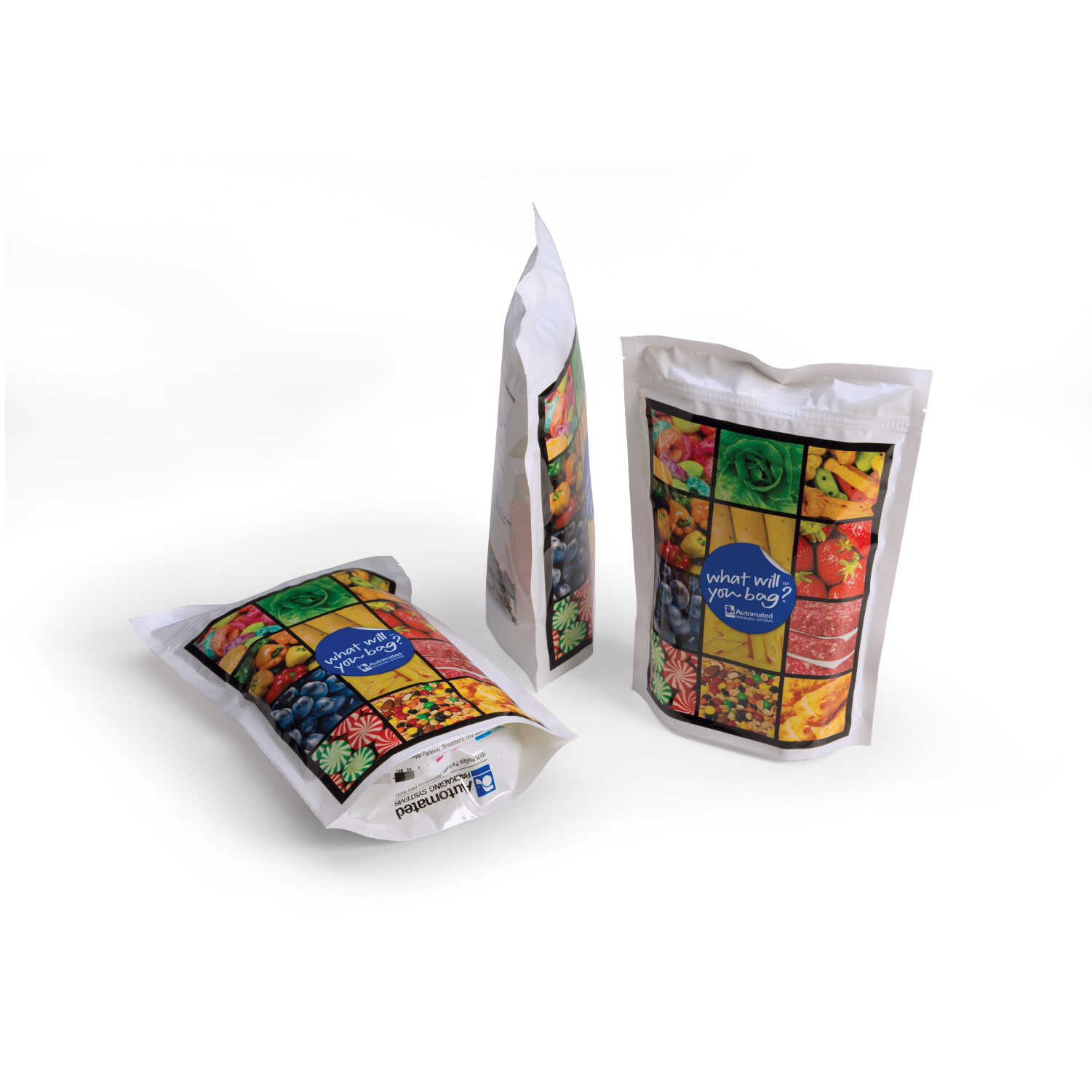Flexible packaging options are becoming more prominent each year, as traditional methods are being replaced with more eco-friendly options in the food, pharmaceutical, and healthcare fields. Increased awareness of sustainability is fueling the growth.
The cost of producing flexible packaging is lower than standard packaging, as it takes fewer materials to produce. The more film layers are added to a package, the more secure and tamper-proof it becomes. As a result, zip locks and resealable seals are now common features on packages, such as stand-up pouch bags, which makes it convenient for the consumer for opening the product. The strong, durable film protects the package from tearing at retail stores or in the supply chain.
After it is produced, the materials can be reused and recycled. It generates less greenhouse gas emissions through its distribution than traditional packaging methods.
Other common features of flexible packaging include a lightweight product that is easy to transport and takes up less space during shipping. Flexible packaging is customizable as it can be molded into an array of shapes and sizes.
As the packaging industry continues to get more creative with flexible packaging, innovations, and advancements in packaging design, concepts and marketing plans are helping propel the movement forward.
Here are 4 reasons to switch from rigid to flexible packaging:
1. Flexible Packaging Maximizes Valuable Space
Whether you’re a food processor or food service operator, you don’t have an endless amount of space to dedicate to packaging equipment or materials. A simple way to maximize the space you have is through flexible pouch packaging for liquid food products like sauces, condiments, soups or even ground meat. Flexible packaging occupies 40% less space than metal cans, which helps optimize warehouse space and back-of-house storage. That means easier inventory management so food processors and restaurants can keep more product on hand.
2. Flexible Packaging Reduces Costs
Food processors and restaurants can decrease their total cost of operations by switching from rigid to flexible formats. You know that flexible packaging takes up 40% less space versus metal tins – but that doesn’t only translate to increased inventory. Because it takes up less space in shipments and weighs one-tenth as much as traditional metal cans, both processors and restaurants can take advantage of significant cost savings. By investing in this format, food processors will support the process efficiency needs of their customers and maximize their own return on investment.
Whether it’s a tin of tomato sauce or a jar of guacamole, restaurant employees spend time scraping the inside of the container, careful not to throw out valuable product. Flexible pouch packaging, on the other hand, has a structure that enables up to 20% more product yield. Less product thrown out means less money wasted.
3. Flexible Packaging Increases Safety
In a restaurant environment, employee safety is always top of mind. Whereas the evacuation of product from number 10 cans creates a safety hazard for restaurant employees due to sharp edges on the tin and lid, it is a much safer option. Employees commonly use tin openers, knives and scissors to open a rigid container and scrape the remaining product from the bottom of the can, jar or jug – this creates both a messy kitchen and an unnecessarily dangerous situation. Flexible packaging is a much safer option, especially with options like easy-open tabs.
Requiring tools doesn’t only impact employee safety, though. The use of scissors and knives for rigid containers also present a risk of cross-contamination. Those solutions, on the other hand, keep food safer by reducing cross-contamination and increasing durability throughout the journey.
4. Flexible Packaging Is More Sustainable
Think about what you’ve read in this article so far. Almost everything we’ve mentioned helps improve your sustainability profile – improved yield, increased food safety and space savings. Each of these benefits plays a factor in truly sustainable practices. But there’s even more to this sustainability story.
When consumers see dented cans on grocery store shelves, they avoid them. And for good reason! The same happens with food service operators – due to fear of contamination and loss of confidence in the product, restaurants frequently throw out dented tins and jugs. Because those solutions are, well… flexible, restaurants can avoid this problem and have peace of mind that their products aren’t going to waste.
Flexible packaging produces 1/10 the amount of CO2 compared to metal tins.
Flexible packaging also consumes 75% less energy and produces one-tenth of the amount of CO2 emissions compared to metal tins. Additionally, a higher product-to-package ratio means it uses less water and energy to both manufacture and transport – which results in fewer materials in a landfill.
End-of-life recovery is an important aspect of sustainability. At Sealed Air, we’ve certified many of our vertical form-fill-seal films as compatible with LDPE RIC4 recycling streams*.
From maximized space to improved sustainability, there are countless reasons to switch from rigid containers to flexible packaging. Are you convinced yet?
